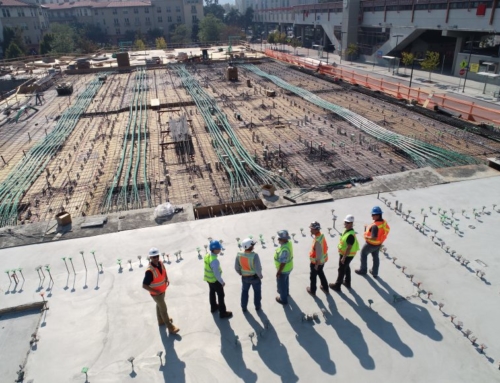In the construction industry, contracts may be written on a completed contract basis or percentage-of- completion basis. In the case of a completed contract, you issue only one invoice when the job is finished. Percentage-of-completion contracts on the other hand, are used for larger, long-term projects where you invoice a number of times over the life of the job based on the estimated amount of work completed to date. Regardless of the type of contract, there are a number of things to consider in creating a construction industry invoice.
CONTRACT TERMS
Make sure you review and follow any specifications for invoicing in your contract. It is essential to follow requirements for method of billing, format, name and address of recipients and any other details. If you don’t follow the contract terms, your invoice will probably be rejected and you’ll have to start over again.
FORMAT
Construction invoices usually follow the format developed by the American Institute of Architects (“AIA”).
The standard format is the Document G703. There are other related AIA Documents such as the G702, Final Waiver and Release of Liens and Claims, which may need to be attached to the invoice.
CLASSIFICATIONS
Amounts to be invoiced usually need to be broken down into the type of work performed. Construction Specifications Institute (“CSI”) categories or divisions, such as site work or concrete for example, are typically used to break down charges by category.
RETAINAGE
A hold back of the amount invoiced of 5-10% is usually required to ensure work is completed. The amount of retainage for the invoice and the contract to date should be included.
SUPPLIER INVOICES
If you have supplier invoice amounts which need to be included in your invoice, verify the percentage completion and include the amount in your invoice by category of work performed.
INVOICE TEMPLATE
You should create an invoice template for each contract, which incorporates your contract requirements and accepted industry practice for format, classifications, retainage, supplier invoices and any other necessary details. This is especially important for percentage-of-completion contracts, which require many invoice and contract-to-date calculations, sub-totals and totals by categories or divisions and invoice.
Creating an invoice template by contract will help to reduce the number of math and information errors in a construction invoice. These types of avoidable errors, and disagreements over percentage-of- completion estimates are the main reasons for delays in paying invoices. A little effort on the front end creating a template will save you a lot of extra time and effort trying to correct invoices so you can collect your accounts receivable.
INVOICE ATTACHMENTS
Creating an invoice is the main objective, but no invoice is complete if any required documents are not attached and sent with the invoice to your customer.
Creating a construction invoice is much easier if you have an automated accounts receivable system with billing and invoicing, which includes features such as invoice template creation, work flow and online notes.
Automated accounts receivable software, which incorporates these important features, is available from Lockstep Collect, a leader in the field with a track record of assisting construction firms with billing and invoicing and accounts receivable management. If your firm would like learn more about how you can improve billing, invoicing and accounts receivable management please contact Lockstep Collect at www.lockstep.io.




